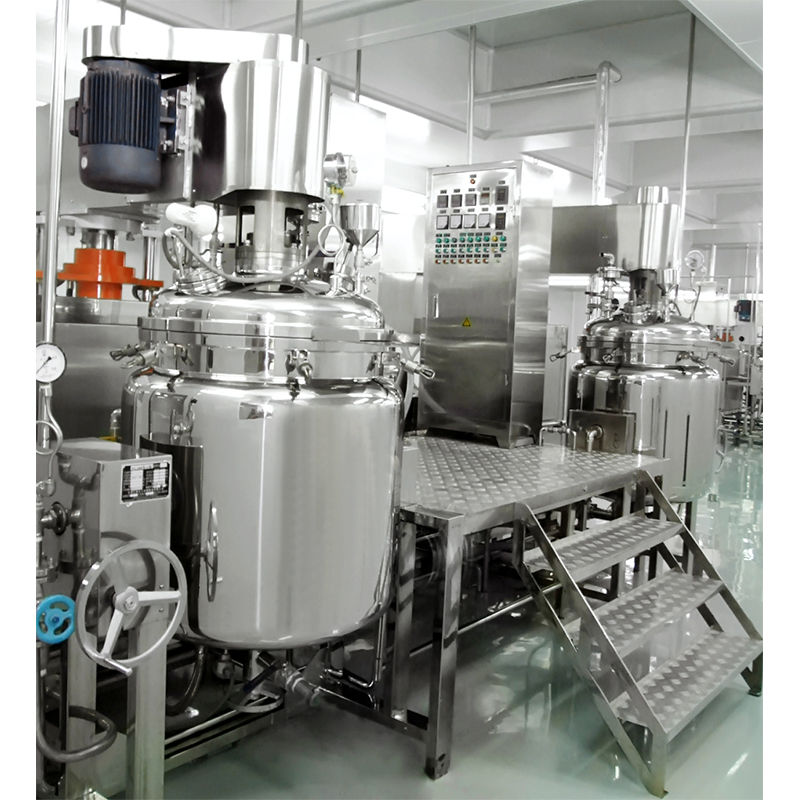Vacuum emulsification machine is a key equipment used to produce cream, lotion, suspension and other products in cosmetics, pharmaceutical, food and other industries. It ensures the delicate and stable texture of the product through efficient mixing, homogenization, emulsification, and vacuum degassing processes. However, during long-term operation, the vacuum emulsification machine encounters various fault problems. Here, Jinzong Enterprise, with over 20 years of experience in the design and development of emulsifying machines, will provide a detailed introduction to common faults and their solutions in vacuum emulsifying machines, helping operators quickly troubleshoot and ensure production efficiency and product quality.

Fault 1: Abnormal Mixing System
Phenomenon: The mixing speed is unstable, and the mixing shaft is stuck or making abnormal noises.
Cause Analysis: motor malfunction, gearbox damage, poor alignment of mixing shaft, and wear or deformation of impeller.
Solution:
Check the motor and reducer, and replace them if there is any damage. Adjust the alignment of the mixing shaft to ensure proper installation. Replace worn blades and maintain the integrity of the mixing system.
Fault 2: Insufficient Vacuum Degree
Phenomenon: The vacuum pump cannot reach the set vacuum degree, and the vacuum pumping time is too long or cannot be evacuated.
Cause Analysis: Vacuum pump malfunction, damaged sealing ring, system leakage, filter blockage.
Solution:
Repair the vacuum pump and replace it if necessary. Replace aged or damaged sealing rings. Check and repair all possible leakage points. Clean or replace clogged filters.
Fault 3: Heating System Not Working
Phenomenon: Heating is slow or unable to reach the set temperature.
Cause Analysis: Damaged heating elements, malfunctioning temperature controllers, and issues with the circulating water system.
Solution:
Check and replace damaged heating elements. Debugging or replacing faulty temperature controllers. Ensure that the circulating water system is unobstructed and adjust the water flow rate and temperature appropriately.
Fault 4: Poor Homogenization Effect
Phenomenon: The product has a large particle size and poor uniformity.
Cause Analysis: wear of homogenizer head, improper speed setting, insufficient material pretreatment.
Solution:
Check and replace the worn homogenizer head. Adjust the speed to the appropriate range and optimize according to the material characteristics. Strengthen the pre-treatment of materials, such as appropriately heating, dissolving, or screening the raw materials.
Fault 5: Control system malfunction
Phenomenon: The operation interface is unresponsive, and parameter settings cannot be saved or executed incorrectly.
Cause Analysis: software failure, hardware damage, loose wiring connections.
Solution:
Restart the system and check if the software needs to be updated or reinstalled. Check and replace damaged hardware components. Tighten all line connections to ensure stable signal transmission.
Conclusion
The efficient operation of vacuum emulsifiers is crucial for ensuring product quality. In the face of the common faults mentioned above, timely and accurate diagnosis and scientific and reasonable maintenance are key. Operators should regularly maintain and upkeep the equipment to reduce the incidence of malfunctions, while strengthening their own learning of equipment principles and maintenance knowledge to cope with unexpected situations and ensure smooth production. When dealing with complex faults, it is recommended to contact professional technical personnel for guidance or direct on-site service to avoid greater losses caused by improper operation.
|
联系我们
全国服务热线 肇庆一分厂:广东省肇庆高新区(大旺)康泰街3号 肇庆二分厂:广东省肇庆高新区(大旺)建设路36号 E-mail: jinzong@jinzong.com.cn
|


